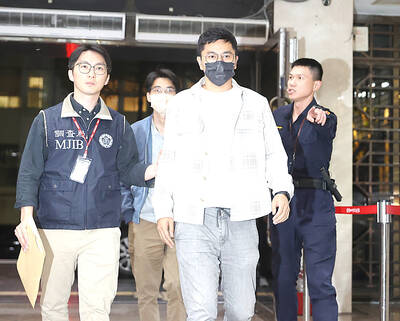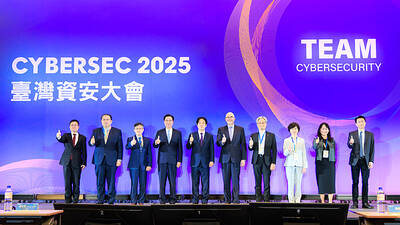As if in a shadow play of a major Hollywood premiere, photographers pressed up to a procession of film stars strolling into a theater aglow with hype and klieg lights. Keanu Reeves chatted on camera with Access Hollywood and MTV reporters. Will Smith and his wife, the actress Jada Pinkett Smith, waved to onlookers. Carrie-Anne Moss and Laurence Fishburne glittered on a black carpet ordered for the occasion.
The event at Warner Brothers Studios was a sort of coming-out party for Enter the Matrix. No, it's not one of the long-anticipated sequels to The Matrix, the cyber-chic 1999 thriller. It is, instead, a video game.
With a production cost that some industry experts estimate at as much as US$20 million, it is likely to be the most expensive video game yet made. More importantly, the game, laced with an hour of new Matrix film scenes and megabytes of cinematic tricks, represents the closest collaboration so far between the converging orbits of moviemaking and game production in an entertainment universe that is finding new profits, partnerships and possibilities in ever more sophisticated digital technologies.
The game's 244-page equivalent of a shooting script was written by Larry and Andy Wachowski, the brothers who wrote and directed The Matrix for Warner Brothers Pictures as well as two sequels being readied for release this year. (The game's release by Shiny Entertainment is to coincide with the May 15 opening of the first sequel, The Matrix Reloaded.) Similarly, the films' set and custom designers and much of their departments did double duty for the game, as did the movies' famed Hong Kong fight choreographer, Yuen Wo Ping, and the films' lead actors.
"We had a notion to take the stars of the movies and have them play supportive roles in the video game and tell a story that is a companion story to the movies,'" said Joel Silver, the films' producer. Blending the productions, he said, became essential to maintaining the quality and requirements of the "content-driven" projects.
"There are scenes that start in the video game and will complete the movie," he said, noting that the game was conceived to "feel like it's a part and experience of the movie." Some of the plot lines intersect, and one of the player's missions is to get a character to a location pivotal to the story in Reloaded.
Bruno Bonnell, chairman and chief executive of Infogrames, which recently acquired Shiny Entertainment, calls the phenomenon "a revolution in interactive entertainment."
Of her months of work on both the Matrix sequels and the game as the tough hovercraft pilot known as Niobe, Pinkett Smith said, "It's all one project."
Some of the bigger video game developers, like Activision and Electronic Arts, have also been quick to capitalize on securing licenses to movies, gambling millions of dollars on whether movie premises and characters can make top-selling games.
This year, besides Enter the Matrix, game enthusiasts can expect a slew of movie-related video games that are being developed with the increasingly close cooperation of the moviemakers and actors.
Even Disney's Piglet's Big Movie, due in theaters March 21, is being accompanied by a video game, Piglet's Big Game, made by Gotham Games. It took advantage of Disney's willingness to help blur the line between movie and game by giving both the same look, feel and vocals, said Greg Ryan, general manager of Gotham Games.
Last year, Activision, with games like Spider-Man: The Movie, and Electronic Arts, with Lord of the Rings: The Two Towers, struck gold with movie-to-game projects. Both games, executives for the companies note, were created with unusually high access to the films' makers, including having the movies' actors reprise their roles specifically for the games.
And at an average retail price of US$50 a game, the economics of translating a blockbuster movie into a game that could sell in the millions is attractive, many gamemakers and moviemakers note.
"I think what is going on is that everyone has realized that we are going after the same target audience," said Kathy Vrabeck, an executive vice president at Activision, referring to young males. "I'm not surprised to see more convergence of movies and video games, bringing that experience into the interactive realm where they can continue that experience for hours and hours."
Neil Young, an Electronic Arts vice president in charge of production for the company's Lord of the Rings game franchise, said he had video conference calls from his office in Redwood City, California, with Peter Jackson, director of the film trilogy.
"It is important to keep him in the loop," Young said. "We're trying to understand the language of the film and adopt and retain its core essence, but diverge in ways that are right for the game medium."
Trying to capture box-office lightning in a game cartridge is not new. Some of the first mass-market video games to emerge in the late 1970s were inspired by Star Wars.
But video games based on popular films have often disappointed gamers. For years, they tended to be marketing afterthoughts or blatant money grabs churned out with little more imagination than it took to flood the market with movie-themed lunch boxes and T-shirts, critics note.
Only in recent years, with explosively powerful microprocessors and 3-D graphics chips, as well as the immense popularity of consoles like PlayStation 2, Xbox and GameCube, have game technologies matured enough to begin to approach film-like qualities, said David Perry, president of Shiny Entertainment.
"And we're still in our infancy," he added.

‘FORM OF PROTEST’: The German Institute Taipei said it was ‘shocked’ to see Nazi symbolism used in connection with political aims as it condemned the incident Sung Chien-liang (宋建樑), who led efforts to recall Democratic Progressive Party (DPP) Legislator Lee Kun-cheng (李坤城), was released on bail of NT$80,000 yesterday amid an outcry over a Nazi armband he wore to questioning the night before. Sung arrived at the New Taipei City District Prosecutors’ Office for questioning in a recall petition forgery case on Tuesday night wearing a red armband bearing a swastika, carrying a copy of Adolf Hitler’s Mein Kampf and giving a Nazi salute. Sung left the building at 1:15am without the armband and apparently covering the book with a coat. This is a serious international scandal and Chinese

PERSONAL DATA: The implicated KMT members allegedly compiled their petitions by copying names from party lists without the consent of the people concerned Judicial authorities searched six locations yesterday and questioned six people, including one elderly Chinese Nationalist Party (KMT) member and five KMT Youth League associates, about alleged signature forgery and fraud relating to their recall efforts against two Democratic Progressive Party (DPP) legislators. After launching a probe into alleged signature forgery and related fraud in the KMT’s recall effort, prosecutors received a number of complaints, including about one petition that had 1,748 signatures of voters whose family members said they had already passed away, and also voters who said they did not approve the use of their name, Taipei Deputy Chief Prosecutor

UNDER ATTACK: Raymond Greene said there were 412 billion malicious threats in the Asia-Pacific region in the first half of 2023, with 55 percent targeting Taiwan Taiwan not only faces military intimidation from China, but is also on the front line of global cybersecurity threats, and it is taking action to counter those attacks, President William Lai (賴清德) said yesterday. Speaking at the opening of this year’s Cybersec Expo in Taipei, the president assured foreign diplomats and exhibitors that Taiwan remained committed to strengthening its defense against cyberattacks and enhancing the resilience of its digital infrastructure. Lai referenced a report from the National Security Bureau (NSB) indicating that the Government Service Network faced an average of 2.4 million intrusion attempts daily last year, more than double the figure

Retired US general Robert B. Abrams reportedly served as adviser to Chief of the General Staff Admiral Mei Chia-shu (梅家樹) during the Ministry of National Defense’s computer-simulated war games in the buildup to this year’s 41st annual Han Kuang military exercises, local media reported yesterday. For 14 days and 13 nights starting on April 5 and ending yesterday, the armed forces conducted the computer-simulated war games component of the Han Kuang exercises, utilizing the joint theater-level simulation system (JTLS). Using the JTLS, the exercise simulated a continuous 24-hour confrontation based on scenarios such as “gray zone” incursions and the Chinese People’s Liberation